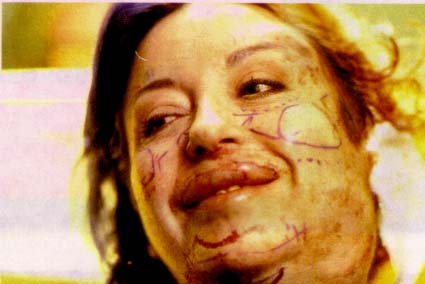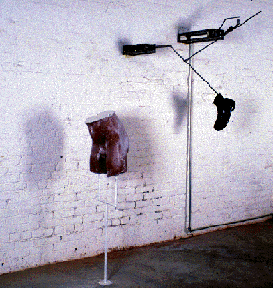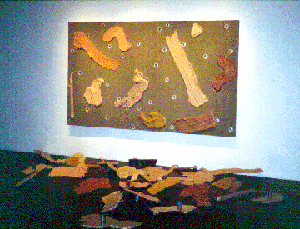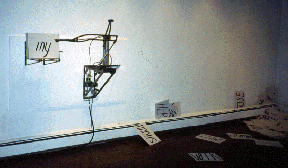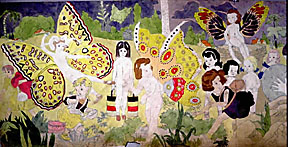
International Sticker Art 2004
November 20th - December 18th
KCDC Skateshop
99 N. 10th Street @ Wythe Ave.
Williamsburg Brooklyn
"Stickerhrow (sti•ker•thro), n.An event where persons, typically musical bands or companies who are a part of an underground youth culture promote themselves or their products by throwing adhesive stickers into large crowds of agitated youngsters often inciting frenzy to obtain the stickers."
Stickerthrow! has a simple concept at it's base. Everybody loves stickers. Especially if they're dope stickers. Double-especially stickers that are free.
So we decided to round up as many Street Artists as we could to pay homage to the humble sticker and flow as many stickers as we could in the process.
We are exhibiting the featured artists in a more traditional gallery setting. We've selected over 40 artists from all over the world who love stickers and have a pile of them wherever they go. Most of these are not stickers that were specially crafted for the show. Many are standard issue stickers you'll find on the streets of New York, Bangkok, London, or Amstersdam. Others have hand crafted stickers just for this event.
We're also going to have an interactive sticker wall that will be covered by stickers from Street Artists from all over as well as inviting any and all persons attending the show to bring and apply their own stickers to the wall.
If you're familiar with Street Art you'll recognize lots of names, Eko, Medium, You Are Beautiful, Jet-Pac. If you're not, then come get an education on who's regultaing the Hood in Paris, San Francisco, Tokyo or New Dehli.
In short we wanted to have a show that was as much about a good time as it was about showing new artists works in a dope medium.Hope to see you there!Abe Lincoln Jr. and Anera
Stickerthrow! has a simple concept at it's base. Everybody loves stickers. Especially if they're dope stickers. Double-especially stickers that are free.
So we decided to round up as many Street Artists as we could to pay homage to the humble sticker and flow as many stickers as we could in the process.
We are exhibiting the featured artists in a more traditional gallery setting. We've selected over 40 artists from all over the world who love stickers and have a pile of them wherever they go. Most of these are not stickers that were specially crafted for the show. Many are standard issue stickers you'll find on the streets of New York, Bangkok, London, or Amstersdam. Others have hand crafted stickers just for this event.
We're also going to have an interactive sticker wall that will be covered by stickers from Street Artists from all over as well as inviting any and all persons attending the show to bring and apply their own stickers to the wall.
If you're familiar with Street Art you'll recognize lots of names, Eko, Medium, You Are Beautiful, Jet-Pac. If you're not, then come get an education on who's regultaing the Hood in Paris, San Francisco, Tokyo or New Dehli.
In short we wanted to have a show that was as much about a good time as it was about showing new artists works in a dope medium.Hope to see you there!Abe Lincoln Jr. and Anera








